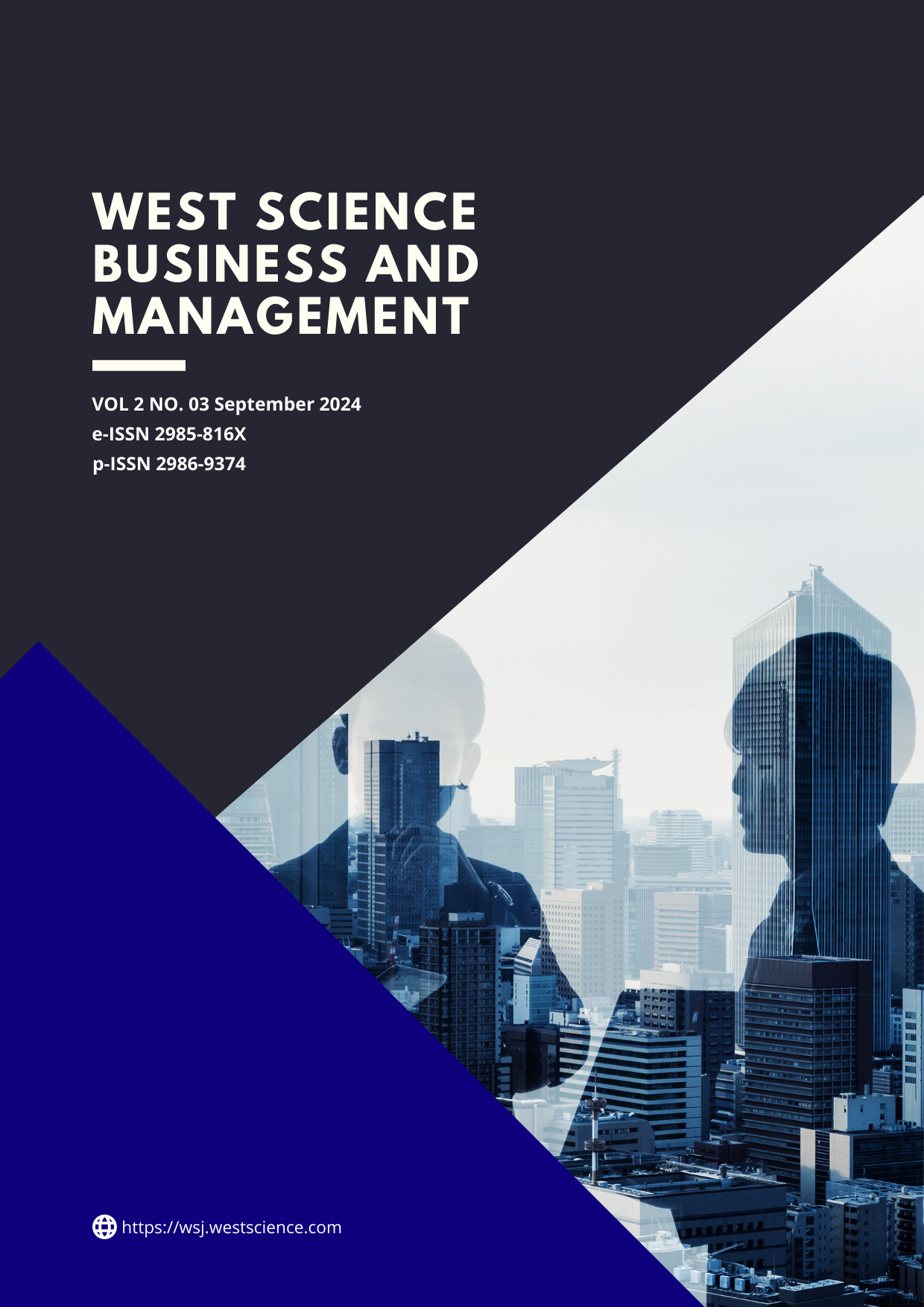Bibliometric Assessment of Data-Driven Marketing Research Trends in the Last Two Decades
DOI:
https://doi.org/10.58812/wsbm.v2i03.1278Keywords:
Data-driven marketing, innovation, decision-making, machine learning, bibliometric analysisAbstract
This study presents a bibliometric analysis of data-driven marketing research trends over the last two decades, with a focus on its intersection with innovation, decision-making, and related topics. Using VOSviewer for network visualization, we analyze co-authorship, keyword co-occurrence, publication frequency, and country collaboration to uncover key themes and research developments. The findings indicate a significant rise in data-driven marketing research, particularly from 2015 onwards, driven by advancements in big data, machine learning, and artificial intelligence. Co-authorship networks reveal strong interdisciplinary collaboration, while keyword co-occurrence maps highlight the growing role of innovation, decision-making, and machine learning in data-driven marketing. Additionally, country collaboration networks show the United States, China, the United Kingdom, and India as central contributors to global research. The keyword density heatmap emphasizes the increasing focus on data-driven innovation and product development. These insights offer valuable implications for academics and practitioners seeking to understand and apply data-driven marketing in a rapidly evolving digital landscape.
References
H. Liu, X. Li, and S. Wang, “A bibliometric analysis of 30 years of platform research: Developing the research agenda for platforms, the associated technologies and social impacts,” Technol. Forecast. Soc. Change, vol. 169, p. 120827, 2021.
M. Wedel and P. K. Kannan, “Marketing analytics for data-rich environments,” J. Mark., vol. 80, no. 6, pp. 97–121, 2016.
T. Davenport and J. Harris, Competing on analytics: Updated, with a new introduction: The new science of winning. Harvard Business Press, 2017.
R. Kitchin, The data revolution: Big data, open data, data infrastructures and their consequences. Sage, 2014.
A. McAfee, E. Brynjolfsson, T. H. Davenport, D. J. Patil, and D. Barton, “Big data: the management revolution,” Harv. Bus. Rev., vol. 90, no. 10, pp. 60–68, 2012.
K. Crawford and J. Schultz, “Big data and due process: Toward a framework to redress predictive privacy harms,” BCL Rev., vol. 55, p. 93, 2014.
A. Rossmann, Y. Bozkurt, and A. Heinz, Machine Learning in Marketing: A Systematic Literature and Text Mining Research. 2020.
K. Jarek and G. Mazurek, “Marketing and artificial intelligence.,” Cent. Eur. Bus. Rev., vol. 8, no. 2, 2019.
J. Kietzmann, J. Paschen, and E. Treen, “Artificial intelligence in advertising: How marketers can leverage artificial intelligence along the consumer journey,” J. Advert. Res., vol. 58, no. 3, pp. 263–267, 2018.
G. Shmueli and O. R. Koppius, “Predictive analytics in information systems research,” MIS Q., pp. 553–572, 2011.
E. Siegel, Predictive analytics: The power to predict who will click, buy, lie, or die. John Wiley & Sons, 2013.
A. Gandomi and M. Haider, “Beyond the hype: Big data concepts, methods, and analytics,” Int. J. Inf. Manage., vol. 35, no. 2, pp. 137–144, 2015.
O. Tene and J. Polonetsky, “Big data for all: Privacy and user control in the age of analytics,” Nw. J. Tech. Intell. Prop., vol. 11, p. 239, 2012.
K. D. Martin and P. E. Murphy, “The role of data privacy in marketing,” J. Acad. Mark. Sci., vol. 45, pp. 135–155, 2017.
S. L. Brunton and J. N. Kutz, Data-driven science and engineering: Machine learning, dynamical systems, and control. Cambridge University Press, 2022.
F. Provost and T. Fawcett, “Data science and its relationship to big data and data-driven decision making,” Big data, vol. 1, no. 1, pp. 51–59, 2013.
E. Delage and Y. Ye, “Distributionally robust optimization under moment uncertainty with application to data-driven problems,” Oper. Res., vol. 58, no. 3, pp. 595–612, 2010.
P. Kadlec, B. Gabrys, and S. Strandt, “Data-driven soft sensors in the process industry,” Comput. Chem. Eng., vol. 33, no. 4, pp. 795–814, 2009.
J. Zhang, F.-Y. Wang, K. Wang, W.-H. Lin, X. Xu, and C. Chen, “Data-driven intelligent transportation systems: A survey,” IEEE Trans. Intell. Transp. Syst., vol. 12, no. 4, pp. 1624–1639, 2011.
T. Johns, Should you be persuaded: Two samples of data-driven learning materials, vol. 4. na, 1991.
J. N. Kutz, S. L. Brunton, B. W. Brunton, and J. L. Proctor, Dynamic mode decomposition: data-driven modeling of complex systems. SIAM, 2016.
P. Mohajerin Esfahani and D. Kuhn, “Data-driven distributionally robust optimization using the Wasserstein metric: Performance guarantees and tractable reformulations,” Math. Program., vol. 171, no. 1, pp. 115–166, 2018.
F. Tao, Q. Qi, A. Liu, and A. Kusiak, “Data-driven smart manufacturing,” J. Manuf. Syst., vol. 48, pp. 157–169, 2018.
E. Brynjolfsson, L. M. Hitt, and H. H. Kim, “Strength in numbers: How does data-driven decisionmaking affect firm performance?,” Available SSRN 1819486, 2011.
Downloads
Published
Issue
Section
License
Copyright (c) 2024 Loso Judijanto, Adi Suroso, Andriya Risdwiyanto

This work is licensed under a Creative Commons Attribution-ShareAlike 4.0 International License.





















 Instagram
Instagram 